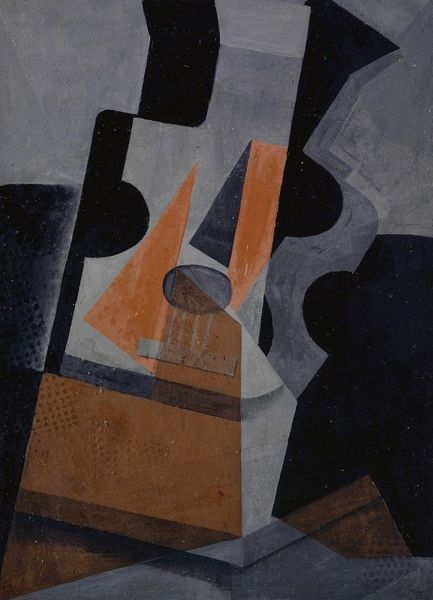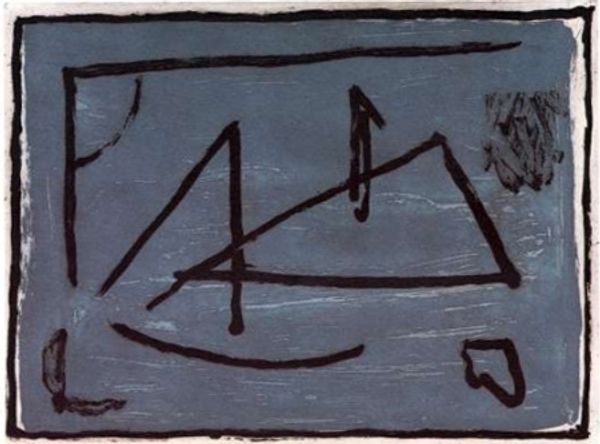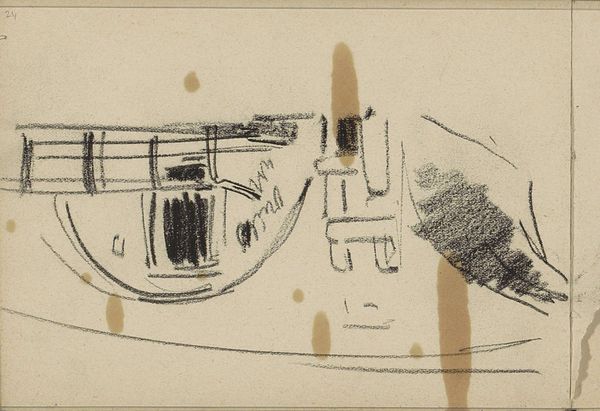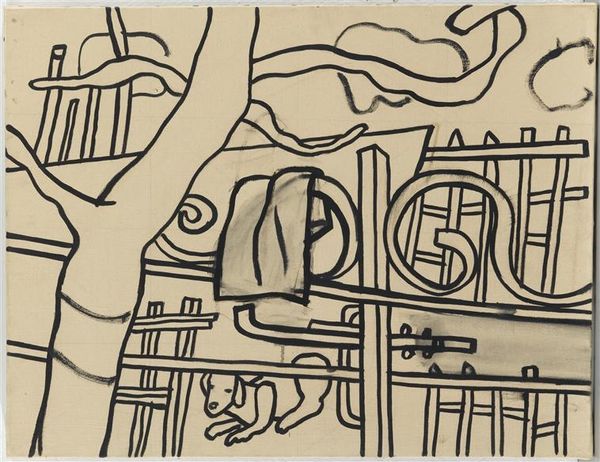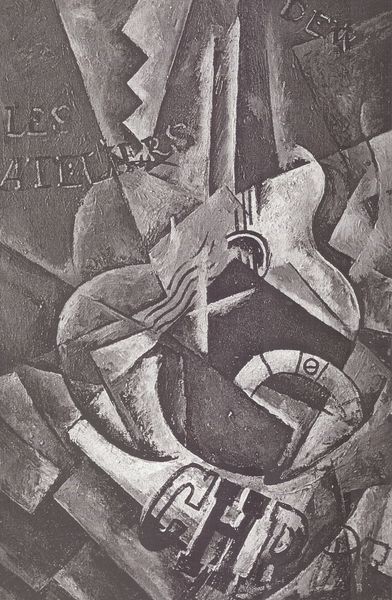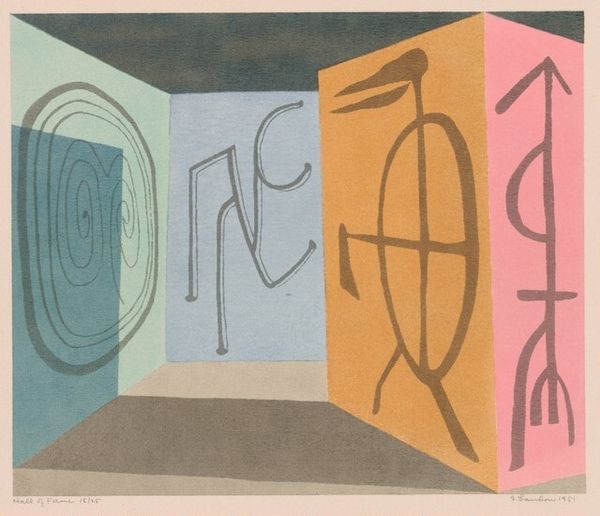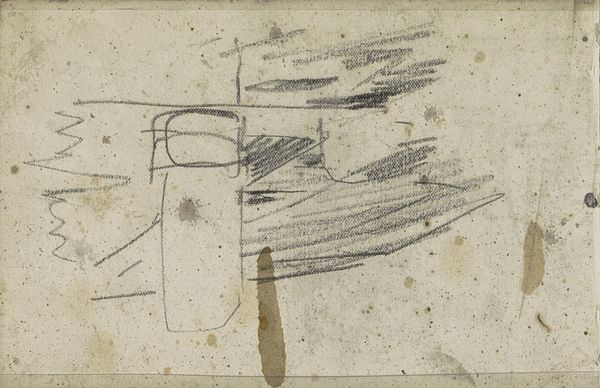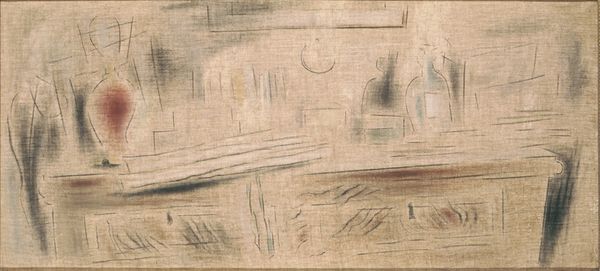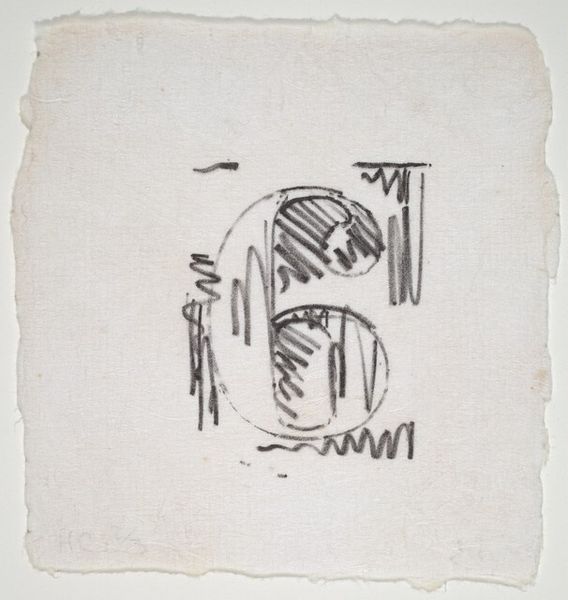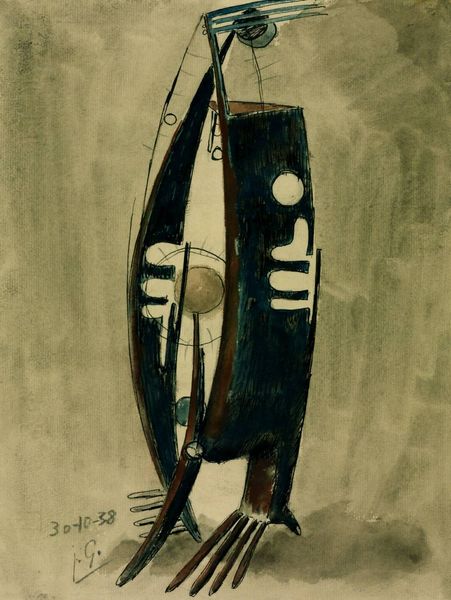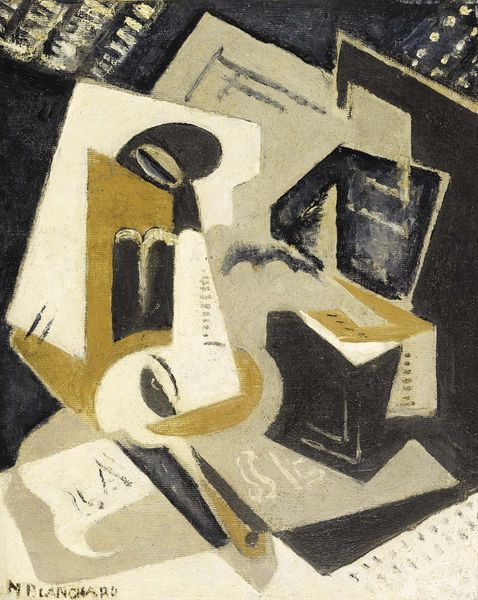
mixed-media, collage, painting, paper
#
cubism
#
mixed-media
#
collage
#
painting
#
paper
Copyright: Public domain US
Curator: This mixed-media artwork by Pablo Picasso, entitled "Still Life," was created in 1921. Editor: Immediately, I notice a muted palette contrasted by crisp lines. There's a stillness here, an almost meditative quality, despite the fragmented composition. Curator: It's classic Cubism. The era was marked by massive societal shifts post-World War I and challenged conventional perspectives on representation, identity, and truth. Editor: And the inclusion of the newspaper clipping "Le Jour," in my reading, emphasizes that the work does more than present domestic life; it speaks to how larger social events bleed into the domestic sphere. How mass media shapes even our most private moments. Curator: Indeed. We can consider it a visual manifestation of Bergson's concept of duration, which attempts to grasp time as an unbroken, continuous whole. How lived experience accumulates and melds. Editor: Although "lived experience" was still somewhat determined by socio-economic location at this point, and here, in the 1920's, there's no overt nod to a lower class or worker perspective. It's very bourgeoisie-friendly. The composition of objects still creates tension—the tilted newspaper contrasts the solid block above, disrupting assumptions about the comfort usually linked to still lifes. It’s a work about material culture of a specific class. Curator: True, and the work sits comfortably in the rise of mass production— where art also started being considered in terms of reproducibility and distribution within a new industrialized framework. I see your point—it isn’t necessarily challenging systems of oppression beyond that of representation, and maybe its function is to uphold it through taste-making. Editor: Which still has relevance, when you consider how media operates to influence public tastes and manufacture consent. The beauty of still lifes, though, is the many perspectives they can evoke through their simplicity and intimate scale. Curator: Definitely! Considering how many things impact one another. And I think that makes this a complex artwork beyond first impressions. Editor: I agree, revisiting "Still Life" today gives me a nuanced look at visual language as commentary and cultural history.
Comments
No comments
Be the first to comment and join the conversation on the ultimate creative platform.

